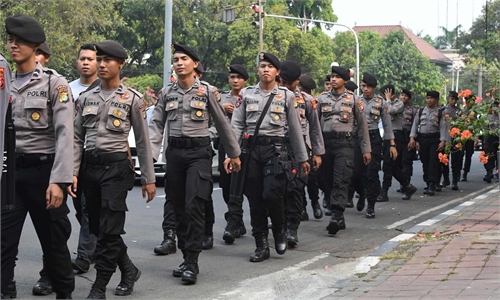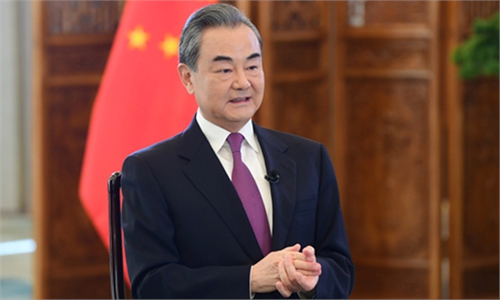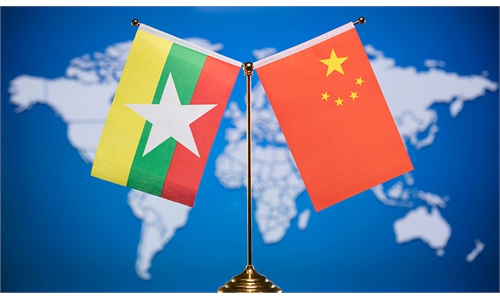
Photo taken on Oct. 12, 2017 shows a night view of the Sule Pagoda in Yangon, Myanmar. Yangon is Myanmar's largest city and economic center. It is an important gateway and window to Myanmar, which has seen an increasing influx of foreign tourists and investors in recent years. (Xinhua/U Aung)
Steady Continued cooperation on regional integration between China and Myanmar gave a sharp contrast to India, which turned a blind eye toward such development trend and let go opportunties, a Chinese analyst said on Monday.
The comments came after China and Myanmar signed a memorandum of understanding (MoU) on Sunday to conduct feasibility study of a 650-kilometer-long railway linking Mandalay, the country's second largest city in Myanmar's central region, with Kyaukphyu, the major town in Myanmar's Rakhine state.
Zhao Gancheng, director of the Center for Asia-Pacific Studies at the Shanghai Institute for International Studies, told the Global Times that the signing of the MoU is an important step toward a very significant project under the China-Myanmar Economic Corridor and part of the Chinese Belt and Road Initiative.
When the concept of the corridor was first introduced in 2013, India was initially involved in the regional integration project, only to withdraw further into the process.
The continued development of the Mandalay-Kyaukphyu railway shows that regional integration is moving forward even as India, which could play a major part in the program, has chosen not to participate, Zhao said.
Zhao said while the progress of the railway project largely depends on the Myanmar government, the benefit of such a railway will be significant in terms of transportation facilitation, low-cost resources allocation and the development of cities along the railway.
"The railway will have a coupling effect with the China-Myanmar oil and gas pipeline, which was already operational and bringing tangible benefits to the development of Myanmar and China's Southwestern regions," Zhao said.
The addition of the railway could allow merchants from China's Yunnan Province to look for business opportunities on the Indian Ocean at Kyaukphyu economic zone and turn the port into a regional center for energy commodities, serving the region instead of meeting Myanmar's domestic demand only, according to Zhao.
China hopes once the feasibility study is completed, the construction of the railway could be pushed forward so as to meet an advanced completion date, generating greater benefits for the two peoples, according to a release from the Chinese embassy in Myanmar.
China-Myanmar railway cooperation is an important project for the BRI and the China-Myanmar Economic Corridor, Myanmar Transport and Communication Minister U Thant Zin Maung told the ceremony.
Feasibility studied for the other section of the China-Myanmar Economic Corridor, including the section linking Mandalay and Muse, a major land port of Myanmar that borders the southwestern Chinese city of Ruili, have already been completed.
In the future, the railway will work in synergy with the China-Laos railway and the China-Thailand railway projects, both seen making headways in recent years.
Viewing these developments through a regional lens, India's lost opportunity to partake in regional cooperation and integration is disappointing, as the South Asian country blindly pursues a self-devised decoupling policy with Chinese capital after a deadly border clash in the Himalayas in June last year and falsely believing it could take a share from China amid a global manufacturing transfer, said Zhao.
"The Indian political elite views votes more than opportunities for economic development, now they feel good riding the wave of anti-China sentiment in India and they are more than willing to drop economic considerations without worrying about its consequences," Zhao said.






